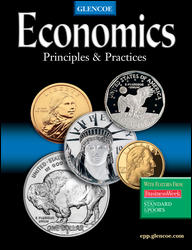
Economics Principles & PracticesChapter 3: Business OrganizationsChapter OverviewsThis chapter deals with the economic organizations that are found in our economy. Most businesses operate in search of profits. Others are organized and operate like a business, although profits are not their primary concern. Section 1 deals with the three main forms of business organization. The first is the sole proprietorship, which is a business owned and operated by one person. The second is the partnership, which is a business jointly owned by two or more persons. The third is the corporation, which is recognized as a separate entity having all the rights of an individual. The proprietorship is the most common and most profitable form of business organization. The corporation is the largest and most visible. Section 2 focuses on the ways that businesses can expand. The first way is through reinvesting internally generated funds, which can also be paid out to the owners in the form of dividends. The second way is through combinations called mergers. Two kinds of mergers, horizontal mergers and vertical mergers, take place for a number of reasons. Some firms merge to become bigger or more efficient. Others merge to eliminate their rivals or to change corporate identity. Some mergers may result in a conglomerate, or even a multinational if the business has manufacturing or service operations in a number of different countries. Section 3 examines other economic organizations such as schools, medical care facilities, and churches. These organizations operate like a business, but on a not-for-profit basis to further the benefit of a cause or the welfare of the members. One example is the cooperative, or co-op, a voluntary association formed to carry on some kind of economic activity or benefit its owners. The labor union is another example. Even government can play a direct role in the economy when it produces goods and services. The government also plays an indirect role when it grants money in the form of unemployment payments, Social Security, or welfare in order to give some groups purchasing power that they would not otherwise have. In each case, the benefits of a government action or policy should outweigh its costs. |  |















